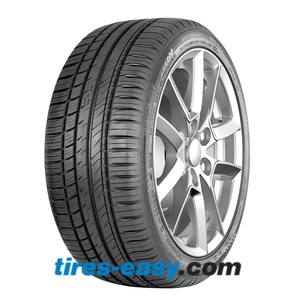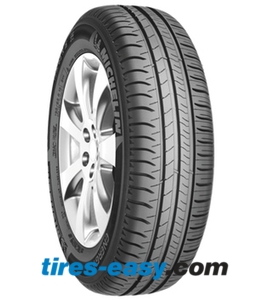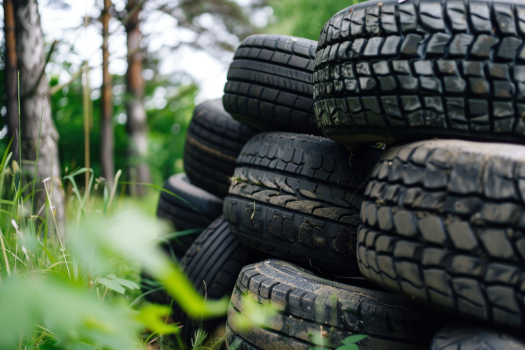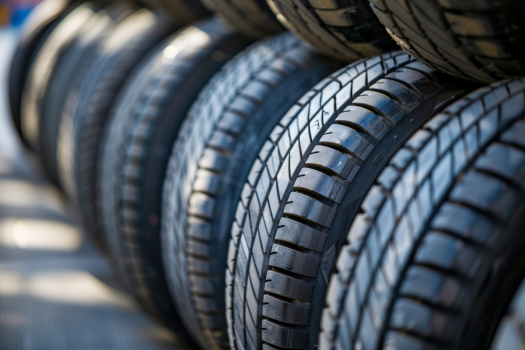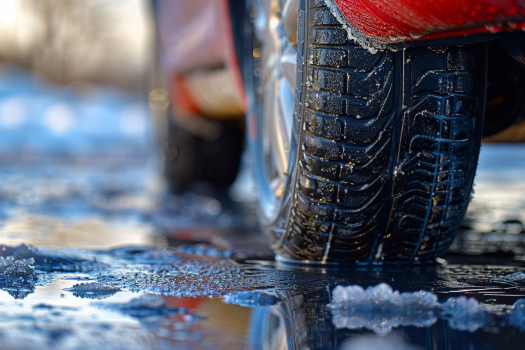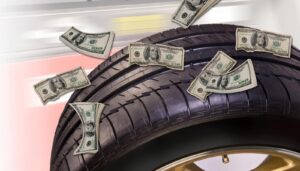Last Updated on April 21, 2024
Unlock Fuel Savings with Low Rolling Resistance Tires
It’s no gamble – we’d bet on these low rollers!
What’s in a name? Fuel-efficient tires, environmentally-friendly tires, low rolling resistance tires. While these may appear like three different products, they’re all names to describe the same thing: tires designed to reduce energy loss and increase fuel efficiency.
If you’ve been shopping for tires lately, you may have noticed that the “green revolution” has entered the tire market. These low-rolling resistance tires have gained significant popularity in the constant battle to increase fuel efficiency and reduce CO2 levels.
What is Rolling Resistance?
To understand how these tires work, we’ll employ the help of our friend, Physics. Rolling resistance is required to get a tire rolling from an idle state. The level of rolling resistance in a tire is measured by the resistance force required to keep the tire rolling. Hysteresis is the energy loss that occurs as a tire rolls through its footprint, which needs to be overcome by the engine.
Phew. Now that we’re through with the boring stuff let’s talk about what makes a tire low-rolling resistant.
Tread Pattern
For one, tread pattern significantly impacts the rolling resistance of any given tire. One reason big vehicles using off-road truck tires get low fuel economy is that the deeper the tread, the more tires flex as they roll. If you reduce the depth of a tire’s tread blocks, you’ll save much more on fuel in the long run.
A smoother tread pattern will roll more efficiently than its aggressive, off-road counterpart, delivering a quieter driving experience.
Tire Compound
Another factor affecting low rolling resistance is tire compound. Your average tire is typically made up of natural and synthetic rubbers. Tire manufacturers have introduced the addition of silica, as well as alternative oils and emulsifiers, to this traditional compound.
The benefit is lower rolling resistance (without sacrificing traction) and a cooler running tire that prevents energy lost as heat.
Several manufacturers have explored alternatives to the normal toxic oils employed during fabrication. These can reduce the negative environmental impact historically associated with the tire industry and are often a component of LRR tires.

Weight
As a rule of thumb, harder, lighter compounds maintain their rigidity better than more pliable or heavy rubbers that tend to deform easily, thus requiring more energy. Sidewall design also affects the weight of a tire. Increasing the stiffness of the sidewall normally reduces rolling resistance but at the same time increases mass, which can negatively impact it.
Ultimately, a tire made of fewer materials requires less energy to deform and, therefore, has more potential for lower rolling resistance.
Why Choose a Low-Rolling Resistance Tire?
A study conducted at the University of Michigan in collaboration with Consumer Reports says you could save $78 per year by switching to low-rolling resistance tires. While that may not seem like a lot, that amount quickly adds up over the tire’s life.
Benefits of Low-Rolling Resistance Tires
-
- Fuel Efficiency: The primary advantage of low rolling resistance tires is improved fuel efficiency. By reducing the energy required to roll, these tires can contribute to better gas mileage and potentially lower your fuel costs.
- Environmental Impact: Lower fuel consumption reduces carbon emissions, making low rolling resistance tires a greener choice for eco-conscious drivers.
- Extended Tire Life: Some low rolling resistance tires are engineered with durable compounds that can result in longer tread life, reducing the frequency of tire replacements.
- Quieter Ride: These tires often produce less noise due to their smoother, more efficient rolling motion, contributing to a quieter and more comfortable driving experience.
What are some popular rolling resistance tires?
If you’re in the market for tires with lower rolling resistance, check out a few of our favorites below:
FUN FACT: All newer model Nokian Tires have low rolling resistance. This is unsurprising, as it aligns perfectly with their commitment to green, sustainable, and environmentally conscious products.
The Nokian eNTYRE 2.0 was designed for North America to give drivers safety, comfort, and performance in an environmentally friendly tire (low rolling resistance for better fuel economy).
The Michelin Energy Saver A/S is Michelin North America’s most fuel-efficient All-Season Passenger car tire developed for the drivers of hybrid and fuel-efficient passenger cars that want to exploit their vehicle’s fuel economy.
Representing the forefront of Michelin Green X technology, Energy Saver A/S tires can enhance vehicle operating efficiency and environmental impact by reducing fuel consumption and carbon dioxide emissions while delivering year-round traction, even in light snow.
The Continental PureContact is an ideal Grand Touring All-Season tire for luxury sedans and sporty coupes. It features a long tread life and low rolling resistance. The computer-optimized symmetric tread reduces noise but increases gripping power.
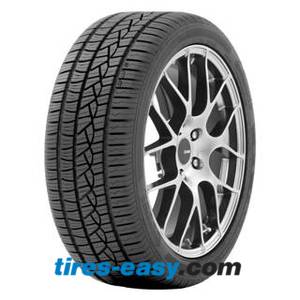 If you’re looking for a safe, comfortable, all-season tire that saves money at the gas pump, the PureContact is a perfect choice. One thing is for sure: no matter how the dice roll, you won’t be taking a gamble on these low rollers.
If you’re looking for a safe, comfortable, all-season tire that saves money at the gas pump, the PureContact is a perfect choice. One thing is for sure: no matter how the dice roll, you won’t be taking a gamble on these low rollers.
Conclusion
In conclusion, low-rolling resistance tires offer a compelling blend of fuel efficiency, environmental benefits, and improved driving experience.
While they may come at a slightly higher initial cost, the long-term savings on fuel expenses and reduced carbon footprint make them a worthwhile investment for eco-conscious drivers.
To experience the advantages of low rolling resistance tires firsthand, consider making the switch and join the movement towards a greener, more efficient future on the road.
Ready to Experience the Versatility of low rolling resistance tires?
Tires-easy supplies high-quality, new tires from Nokian and hundreds of other brands. As a Tire-easy customer, you can access the latest and greatest product offerings in various sizes and features.
Check out our mileage warranties, rebates, and everyday low pricing while gearing up for your next great adventure! Finding your tires just got easier at Tires Easy.
FAQs
Are low rolling resistance tires worth it?
Low rolling resistance tires are worth it for drivers seeking improved fuel efficiency, reduced carbon emissions, and a smoother, quieter ride. While they may have a slightly higher upfront cost, the long-term savings on fuel expenses often make them a cost-effective choice.
Do low rolling resistance tires wear faster?
Low-rolling resistance tires are engineered to balance efficiency and durability. While they may wear slightly faster than some traditional tires, their lifespan is generally competitive. Proper maintenance, regular tire rotations, and alignment checks can help maximize their longevity.
What are the disadvantages of low rolling resistance tires?
Low rolling resistance tires may have disadvantages, such as reduced traction on wet or slippery surfaces. Additionally, they might not provide the same level of performance for high-speed or aggressive driving as some performance-oriented tires. However, these drawbacks are often outweighed by their eco-friendly and cost-saving benefits.
Are low rolling resistance tires loud?
Low-rolling resistance tires are designed to minimize road noise, offering a quieter and more comfortable driving experience. While they may not be entirely silent, their noise levels are generally comparable to or quieter than traditional tires, making them a suitable choice for many drivers.



